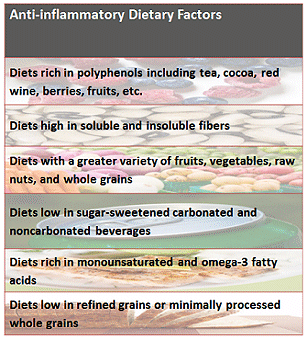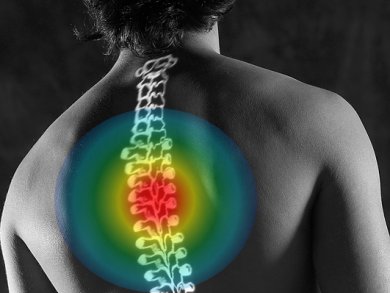Dietary Factors Mediate Inflammation
There’s inflammation, and then there’s inflammation. Acute inflammation is the body’s natural response to certain types of problem, such as a wound or injury. It assists with the immune response, gets blood, and heat, to the site, and generally helps address the problem to assist in healing the wound.
While painful at the time, acute inflammation is usually beneficial. Chronic inflammation, on the other hand, involves recurrent pinging of the pain receptors, circulation of stress hormones and other chemicals perhaps even after the initial problem has gone away. Such chronic inflammation gone awry is thought to underpin the exacerbation of other problems, including long-term pain and to perhaps even trigger other diseases, such as cancer, given the right, or rather the wrong, genetic conditions.
So, what is the answer to chronic inflammation due to the ongoing release of pro-inflammatory molecules even in the absence of a bodily problem that inflammation would otherwise address? There is mounting evidence that dietary intervention might be the answer. Xianli Wu of the United States Department of Agriculture Arkansas Children’s Nutrition Center, at the University of Arkansas for Medical Sciences, Little Rock, USA, and Alexander Schauss of AIBMR Life Science (American Institute for Biosocial and Medical Research) in Puyallup, Washington, USA, writing in the Journal of Agricultural and Food Chemistry, suggest that some dietary factors might have an important role to play in maintaining health. They suggest that polyphenols and other classes of natural products found in fruits, berries, vegetables, nuts, whole grains, and seafood might have the capacity to inhibit chronic inflammation and perhaps even reverse the progression of chronic diseases.
Table 1. Dietary factors found to retard inflammation.

Chronic Inflammation and Chronic Diseases
Inflammation triggered by chemical or physical injury activates the immune system by recruiting white blood cells to the site of injury. These cells then release cytokines, chemokines, and reactive oxygen species to draw in other white blood cells, the leukocytes, to the area to deal with the alien substance ingested, the infectious agent, or the injured tissues. Processes such as cell proliferation, programmed cell death (apoptosis), and cell reproduction and differentiation are then initiated as appropriate. “The response to tissue injury or infection requires a well-orchestrated interaction of immune and inflammatory cells and their products,” the team says.
Unfortunately, for so many people the signaling that controls all these intertwined steps can go amiss leading to painful and debilitating chronic, or unresolving, inflammation, pain and cell growth. The problems that arise through unresolved inflammation are a litany of diseases seemingly associated most closely with the modern Western lifestyle of low activity, junk food excess, and lots of sitting around. These include atherosclerosis, heart disease, diabetes, cancer, obesity, bowel disorders and a range of autoimmune diseases. There are drugs to treat some of these problems, there are anti-inflammatory agents, such as non-steroidal anti-inflammatory drugs (NSAID) and disease-modifying antirheumatic drugs. However, these are always accompanied by side-effects and are never 100 % effective.
“Inflammation, known as the silent killer, is credited with a key role in most major diseases,” Declan Naughton, Professor of Biomolecular Science at Kingston University London, UK, told ChemViews magazine. “The ongoing discoveries of the ability of various foods and their components to suppress or elevate inflammation leads to the tantalizing possibility of developing an anti-inflammation diet,” he adds. “Given the quantities of food that we consume over a lifetime, it is evident that even partial control of inflammation through diet would be of enormous benefit to health.”
Education regarding lifestyle, diet and exercise, however, might be the key to precluding the development of chronic inflammation in the first place, which might reduce the risk of its rather undesirable consequences. “A comprehensive food-based strategy for reducing inflammation and thus reducing the incidence and severity of a large array of chronic illnesses and declining health is supported by a large and growing volume of scientific investigations,” the US team explains. They outline the wide range of compounds present in a huge number of foods and nutrients all of which might, if taken as part of a balanced approach to diet that avoids the conventional exercise-free junk food lifestyle, might just help society side step the growing epidemic of chronic inflammation and the diseases it brings.
- Mitigation of Inflammation with Foods,
X. Wu, A. G. Schauss,
J. Agric. Food Chem. 2012.
DOI: 10.1021/jf3007008




